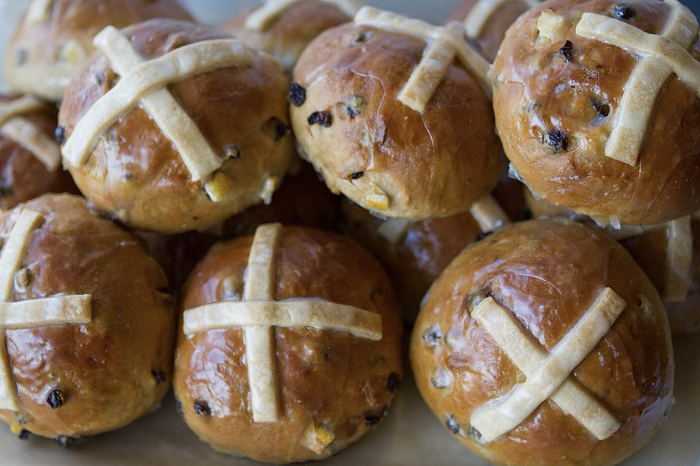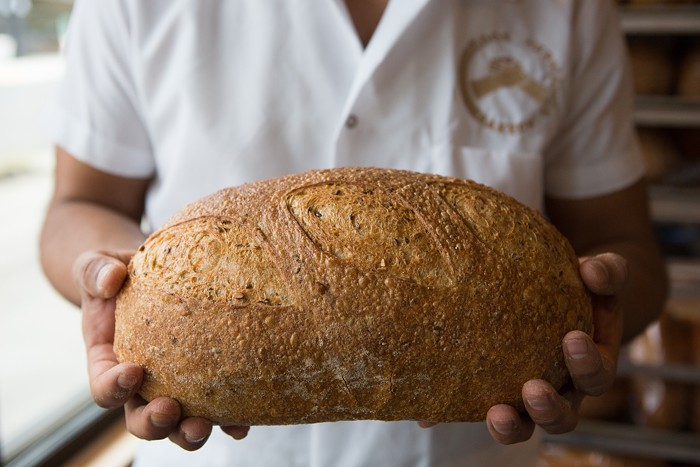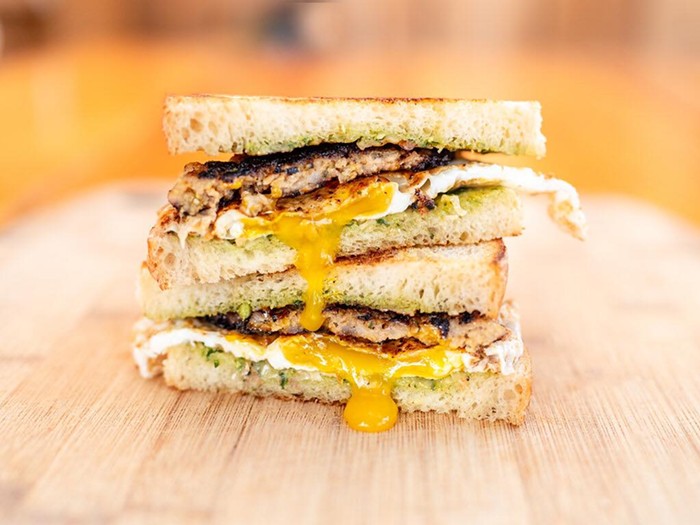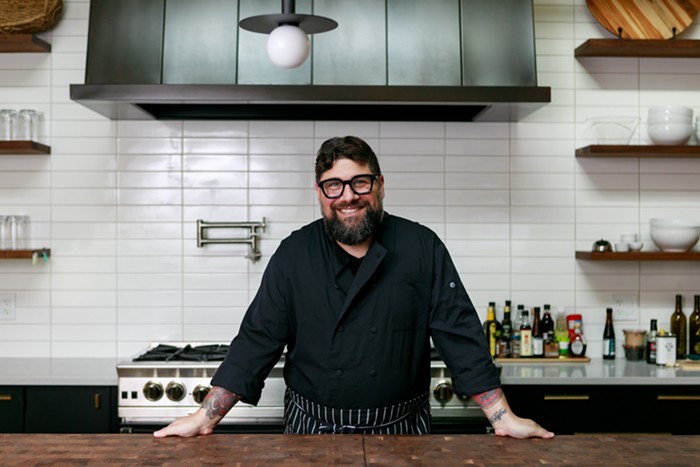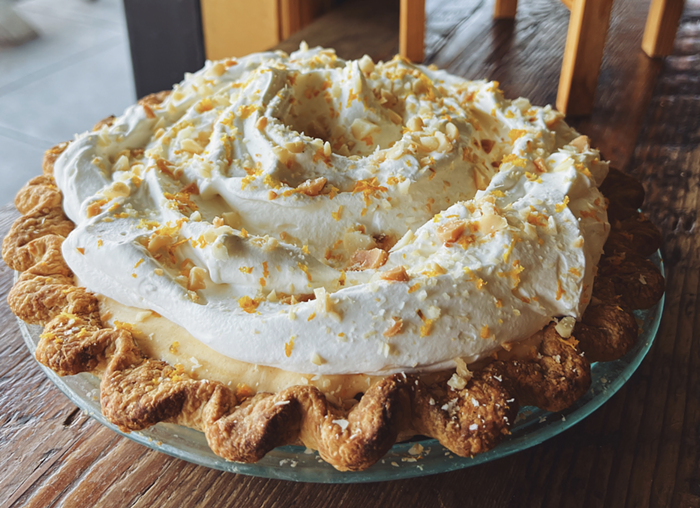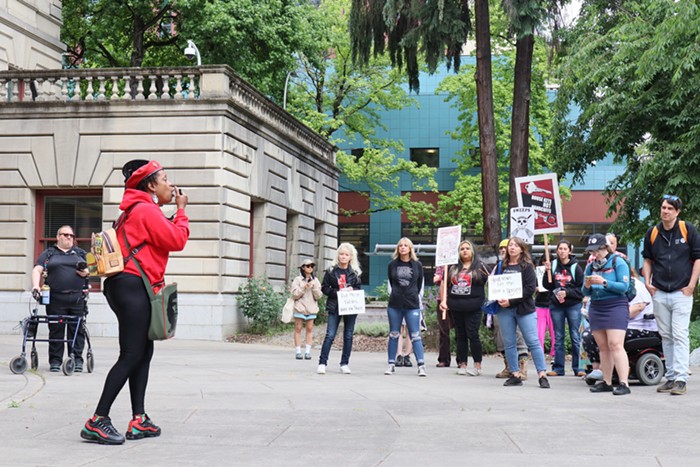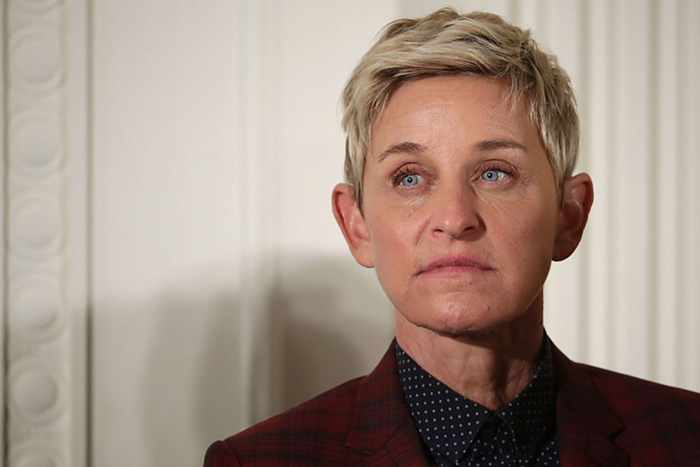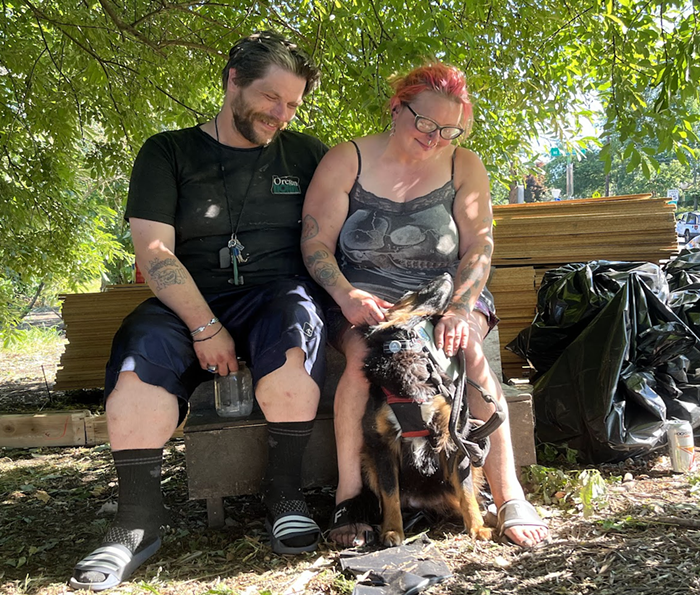 For this week's Mercury, I spoke to Greg Higgins, hoping to learn about his role in the Portland food scene of 1988. What I got was an amazing history lesson. I'm sure there are many more people with a perspective on the birth of Portland's foodie culture, but Higgins is a great place to start.
For this week's Mercury, I spoke to Greg Higgins, hoping to learn about his role in the Portland food scene of 1988. What I got was an amazing history lesson. I'm sure there are many more people with a perspective on the birth of Portland's foodie culture, but Higgins is a great place to start.
I only used a small portion of the interview in the Mercury piece, so I'm posting the entire transcript for your perusal. It's a fascinating read.
Feel free to post your recollections of Portland food in the comments section.
Me: Tell me about '88. Were you at the Heathman at that time?
Greg Higgins: Yeah. I had designed and opened B. Moloch, The Heathman in bakery and pub form. So I was running both those projects and opened that because here's the difference between then and today: I couldn't even find a lot of bread when I first opened the Heathman. I was baking all the Heathman's bread as well as doing everything else. So I opened that thing so we'd have a facility where we would do our smoking, curing, baking, as well as being a brew pub. We contracted out the brewing to Widmer. That was, I think, pretty cutting edge at that time, the idea of having high end food in a brew pub. Also, of course, supplying those raw ingredients, semi-finished ingredients, you could tell we did all the bread, all the smoked meats and sausages. Smoked seafood, stuff like that.
Were you forming ideas for a local artisanal type of scene at that time?
Yeah, at that point we were already doing a lot of that. I came here in '84 to open the Heathman and part of what attracted me here was the wine industry. There were 30 wineries then; now there's 400 plus. So, you can see that exponential curve, we've all been on. The early years at the Heathman were spent basically trying to develop stronger connections to the growers, trying to find people. Direct relationships at that time were somewhat hard to find. There were a few people, I remember, Ralph and Tina out in Pacific Quail Farm in Clakskanie. They were raising game birds and some specialty chickens and things like that, mostly quail, pheasant, blue skinned chickens, things of that nature. Seafood connections were easy.
At that time, there were more abundant resources locally that hadn't been tapped out, as they have been currently. And finding agricultural connections were a little more challenging. Gradually, we built up; it was kind of like building up a portfolio over time, more and more people, you search people out. I do a lot of biking and I'd travel out to the valley looking to see operations that might be approachable. Talk to those people about buying their fruits and vegetables and things.
So you were actually getting your exercise while you were scouting.
It has just been a continuum since then. When I first came here, it was hard to find more than one type of olive oil and you'd be lucky if that was extra virgin in the early '80s. From that period, it gradually grew to a plateau. What year was that? I'm trying to remember when Chris and Bruce opened Zefiro, that was around there, '88, '89.
So, in the late '80s, things started to change. You could find more specialty cheeses. For example, I mean, cheese. Eurobest was really the only game in town. And Eurobest was fully almost maybe brie, a few kinds of Swiss, St. Andre. Things like that. Things that we would consider to be very rudimentary. So, if you wanted anything beyond that, you really had to dig to find it. I was buying cheese--I can't remember what year Pierre at Juniper Grove started. I was really excited to have a local cheese maker on board and that wasn't until late '80s. I'm not sure. You'd have to check that. It was kinda slow going up until that period and then by around 1990, things started to change. I think part of it was a combination of people moving in, and with that, bringing other tastes. A little bit more gradually, in the late '80s, it hit a little plateau and then grew again, made another jerk in the early '90s and there was an explosion.
You know, we [Higgins] opened in 94, so at that point things were at the steeper part of the curve, for diversity and product. But in the meantime, all of it was about finding people. I mean, my first real serious direct connection for growing product was a gal who was taking the plants to the Heathman. She was doing plant maintenance. I hit her up about whether she grew anything at home. Just talking plants with her. She said she grew a few herbs. We gradually started a relationship with her. The amount of revenue she generated, she was able to build a green house and then she built a second green house, incrementally over the years, and then she started buying some products from her neighbors and said, "You know, I got a neighbor that grows onions." And that was the beautiful Sue Eggert. She's still in business, kinda got her rolling along the line and she was sort of an inspiration.
We used to do this series of vendor awards. We had an annual dinner where we'd give an award to a local vendor that we thought was making a significant change in how people thought about food locally. And Sue was either our first or second and Ralph and Tina won from the Ponzi [winery]. Can't remember them all, but those were the early ones, those three. We were trying to help build that up.
What was your inspiration for that? Was it because of what was happening in San Francisco with Alice Waters?
Well, I am good friends with Alice and Michael Wild. They've been friends for a long time. I can't remember when I first became acquainted with those folks.
I'm from up state New York and grew up in a small farm town and my cousins had a big dairy farm and I worked on vegetable farms and dairy farms. I worked as a cheese maker when I was in high school. That background of real American food, if you want to call it that, before things when into the agrichemical explosion. This is a late '60s kind of thing. Those things in my mind--my family did all this pickling and packing and preserving--were ingrained in me and I felt, as a chef, to integrate those components into a real gourmet European tradition in food, which at that point wasn't really happening. Most people seemed to be concentrating on Western European traditions. I felt like it wasn't fair that our country had so many food traditions that were being left at the wayside, as being, "Oh, yeah, that's just farmer food." I brought those things with me and integrated then. We still use my grandmother's pickle recipes. The cherry pitter over there is a hundred years old and is out of that tradition.
So, the goal was to do both and you can't have that tradition without having access to local agriculture. You can't ship pickling cucumbers from California and make pickles out of them because they will just go rotten on you. They have to be fresh picked. So that's kind of the reason. I wanted things like I remember off the farm and you couldn't really achieve that with calling up a big produce house and having them bring you those products. There had to be a link to the farm. So, we just pushed on doing that.
We had other people. We had a guy who had Flamingo Rich farm. He sells at the Hillsdale market. And Charlie did landscape maintenance for the Heathman. I saw him pruning the trees one day out in front of B. Moloch and said, "Do you grow anything by any chance?" He started growing squash and peppers for me and that's how we did it.
That's pretty amazing. How old were you in 1988?
In '88, I was thirty.
Thirty? So you were pretty young.
I came to the Heathman to be the executive chef, the number two guy in '84. I got here in the late spring and early summer of '84, when it was just demolished. I mean they were rebuilding it. The guy I came down to work with was kind of a kook and went off the deep... So, in December of that year, they asked me to take over the operation. I started as officially the executive chef in January of '85. Then I was 27. I was like, "Okay. Let's give it a go." But I basically was doing it for six months anyhow. I was just one of those things, a combination of my ambition and them not being experienced food people. They are a timber family, property management and timber, the Stevensons, so they took a chance on me. It's like hiring a young basketball player or something.
it sounds like you were Portland's first hot young chef. You were Gabriel Rucker before Gabriel Rucker was.
Now, [Portland] has come out. I think we've gotten more to the Raging Bull thing. I'm still in the kitchen. But I love doing it. So, it's fun to see the whole thing evolve. I'm happy to see a lot of my guys have gone on to open their own places and are flourishing and stuff.
I do a lot of teaching. I've spent a lot of time teaching people I work with, so it's rewarding in that basis. I don't even have a culinary background. I have a degree in fine art printmaking. This is something--I came to a fork in the road because I had been cooking all the way through college and had the choice whether to continue, or pursue an academic degree and end up teaching somewhere, or to end up being a chef. A number of things have led me down the path of cooking.
When you first came to Portland, can you remember anything about the restaurant scene in the '80s? I mean, what did it look like?
When I first got the offer at the Heathman, I had been in Seattle working at the Sheraton at the big downtown hotel that had opened up and I'd gotten disillusioned with that because I wasn't cooking at all. Then I was in my early 20s. I got an opportunity to run a small restaurant attached to a wine shop, up near Vancouver, British Columbia. So, I went up there and was doing that and I knew it was a temporary thing. I mostly went up there because it was a geographic anomaly. It's called Point Roberts and you have to leave the United States and cross into Canada and cross it back. It's closer to Vancouver than it is to anything. And I thought, what a cool place to hang out for a little while. So, I did that and then I got the offer to come down here, so when Jonathan called me, the guy I had worked with before, who was the executive chef. I said, "I'll come on down and have a look at it."
I was a little trepidations. I was like "Ehhh, what am I getting into? I'll go down and see whether it is a place I want to be."
First thing they do, of course, in that situation is that they take you out to dinner and dine you around for a few nights to see what the competition has. Not to belittle it, but it struck me that everybody was cooking out of gourmet magazine from like 1968 or something. So, it was like a time warp and they were obviously excellent ingredients. One of the places that were going then was La Berge and it was considered one of the top restaurants. It was French. In fact that was Rose and Bill McGloughlin. They've long since sold the place and retired out of it. I don't know if they're still in town or not. Really sweet people, but they were doing a really dated style of French food. One of the big players of course was Horst Mager. He had--still has--Gustav's and the Rhinelander. And that was fine dining, The Rhinelander. So they took me there and the lederhosen guy started singing.
I was sort of like, I think we can give these guys the run for their money. The hardest part, honestly, was finding cooks. It was really a chore to hire that many cooks. That was kind of the state of affairs. I was excited about the idea of being close to wine. The adage has always been where there's great wine, there's great food. There were about six or ten wineries at the time that obviously were on the right track. So, anyhow, it looked like it was going to be a kind of place to make a splash.
So what was it like being in that whole neighborhood [SW Salmon and 10th] at the time? Vat and Tonsure was there, Hamburger Mary's, Crocodile Records. What was that little downtown area like? It's changed a lot.
Believe it or not, where the Heathman is now was considered fringy. It was a pretty dicey neighborhood [Higgins] was Broadway Revue then. If Broadway Revue had a heyday, I guess that was the heyday. The building across the street was called the Carriage Room and it was a strip joint and there was another strip joint on the other corner. Everybody thought there was no chance that the space [that is now] South Park where [B. Moloch was opened] could possibly succeed. They thought that it was just a doomed location. I was like, "What are you talking about. It's like a block from the concert hall."
People had different impressions of things, clearly. Maybe it took somebody from outside to say, "I think you could." That whole area was funny. There was a little bar there, the Spot Tavern. It got taken over by Hamburger Mary's eventually. It was a tavern no bigger than the area we are sitting in right here. And this crusty old retired bank executive who had been a marine in like World War II. Their whole thing was the coldest beers in town. It was decorated with all this stuff they had collected in traveling in the South Pacific as a Marine and that kind of thing. It was very much, a little slice of frozen time.
That was the way it was. That was a nice place to hang out. To this day people will say, "Oh, the stuffed mushrooms at Le Berge," or "The Cornish game hen at the Vat and Tonsure." I'm like, "C'mon. It's a frozen Cornish game hen. I know you remember it like it was unbelievable, but things change."
